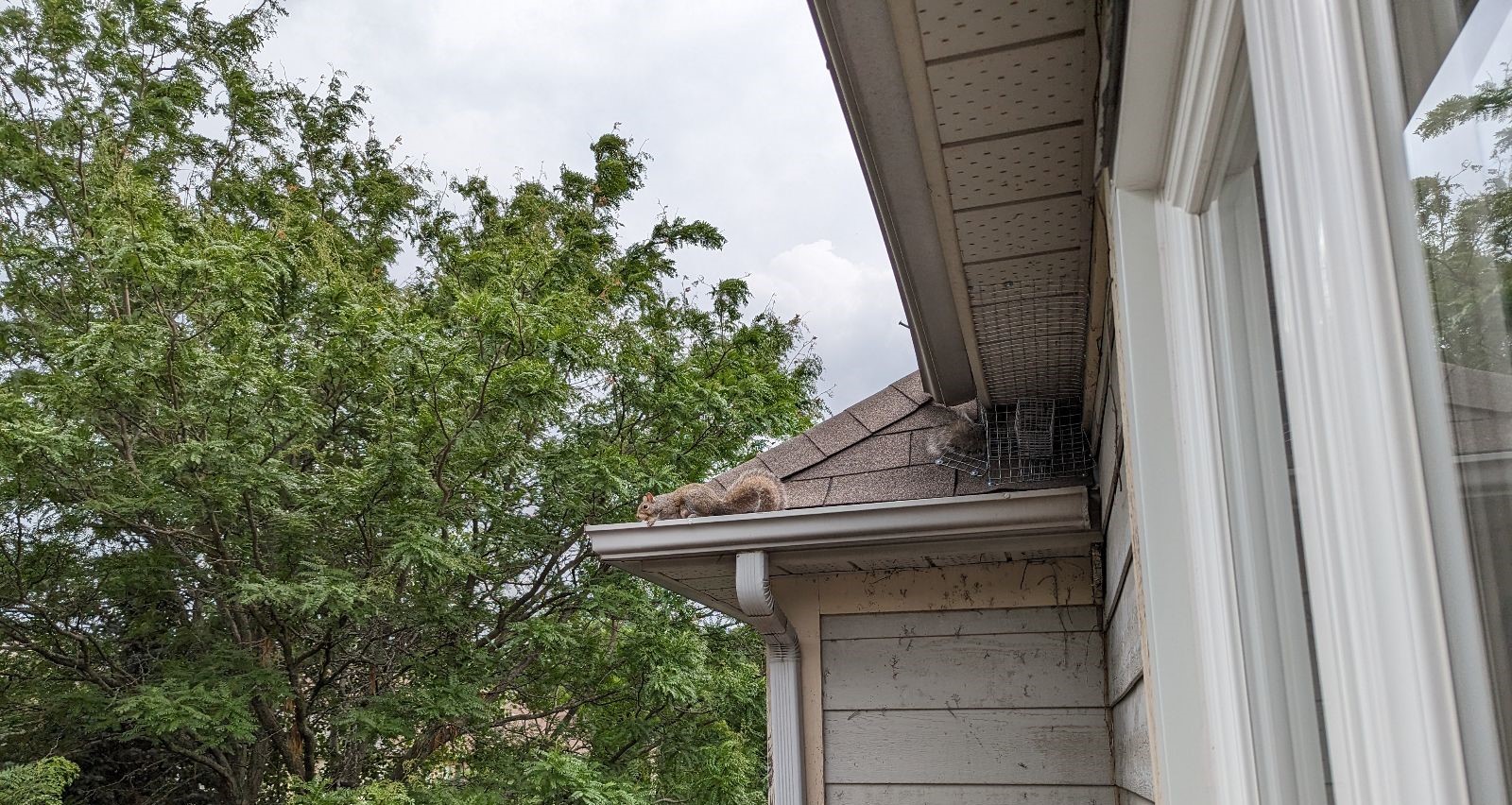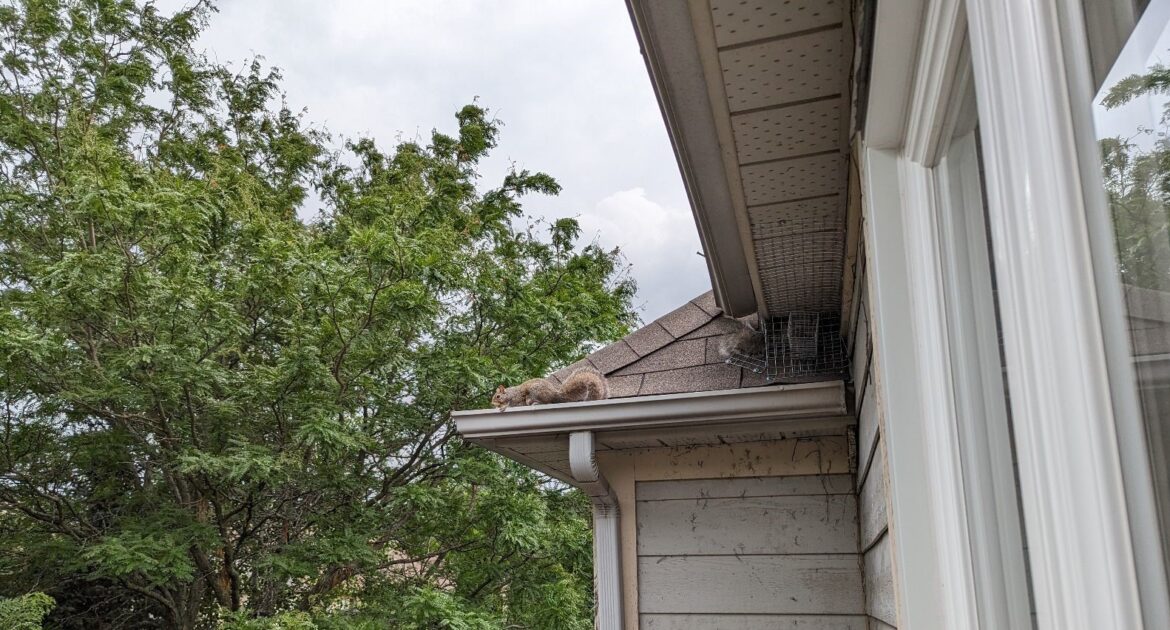Squirrels may look cute in the park, but they can be a major headache for homeowners. These agile creatures are notorious for finding their way into homes, causing significant damage in the process. One of the best ways to prevent squirrel entry and safeguard your home is by paying attention to your insulation.
In this post, we’ll explore how different types of insulation can deter squirrels and how some materials are more resilient than others. By the end, you’ll understand the importance of proper insulation and how it can help keep your home safe from these pesky invaders.
Why Squirrels Invade Homes
It’s crucial to first understand why squirrels invade homes. Squirrels are constantly on the lookout for safe places to nest, especially during colder months or when raising their young. Your attic or walls may provide the perfect environment—warm, sheltered, and often with access to food sources. Once inside, they’ll start making themselves at home, often chewing through insulation, wires, and even wooden structures. This not only causes immediate damage but can also lead to long-term issues like electrical fires or structural problems.
The key to preventing squirrel entry lies in making your home as uninviting as possible. They can squeeze through tiny gaps and chew through various materials to gain entry. This is where insulation comes in. Proper insulation not only helps keep your home energy-efficient but also acts as a barrier that can deter squirrels from making your house their own.
Types of Insulation and Their Vulnerabilities
Different types of insulation offer varying levels of protection against squirrel invasions. Let’s break down the most common types and their strengths and weaknesses.
Fibreglass insulation is one of the most commonly used types in homes. It’s relatively inexpensive and easy to install. However, it has a significant downside when it comes to squirrel invasions. Squirrels can easily chew through fibreglass, sometimes even using it to build their nests. Once they’ve gained entry, the damage can be extensive, requiring costly repairs and replacement.
Cellulose insulation, made from recycled paper products, is another popular choice for homeowners. While it’s more eco-friendly, it doesn’t fare much better against squirrels. They can chew through it just as easily as fibreglass, creating holes and gaps that compromise your home’s energy efficiency and structural integrity. Additionally, cellulose insulation can absorb moisture, leading to mould and mildew problems if not properly maintained.
Spray foam insulation offers a more robust barrier against squirrels. It’s applied as a liquid and expands to fill gaps and cracks, creating a solid, impenetrable layer. While it’s harder for squirrels to chew through spray foam, it’s not entirely foolproof. Determined squirrels may still find ways to gnaw at it, especially around edges and seams. However, it’s generally more effective than fibreglass or cellulose at deterring these pests.
Insulation Around Windows and Doors
While wall insulation is crucial, it’s equally important to focus on insulation around windows and doors. These areas are often the first points of entry for squirrels, as they can exploit gaps and weaknesses to gain access to your home.
Weatherstripping is a common method of insulating windows and doors. It helps seal gaps that could allow air and squirrels to pass through. However, not all weatherstripping materials are created equal. Foam weatherstripping, for example, is relatively easy for squirrels to chew through. Metal or vinyl weatherstripping offers better protection, as it’s more difficult for squirrels to damage.
Expanding foam is another excellent option for insulating around windows and doors. Like spray foam insulation, it expands to fill gaps and creates a solid barrier. It’s particularly useful for sealing larger gaps that squirrels could exploit. However, it’s essential to ensure the expanding foam is applied correctly, as improper installation can leave gaps that squirrels can still access.
Caulking is a simple yet effective way to seal smaller gaps around windows and doors. Silicone-based caulk is particularly durable and can withstand squirrel chewing better than other types. Regularly inspecting and maintaining caulking is crucial to ensure it remains effective over time.
How Squirrels Damage Insulation
Understanding how squirrels damage insulation can help you take proactive measures to protect your home. Squirrels have strong teeth that grow continuously throughout their lives. To keep their teeth at a manageable length, they need to gnaw on various materials constantly. Unfortunately, your home’s insulation often becomes a victim of this natural behaviour.
When squirrels chew through insulation, they create holes and gaps that compromise its effectiveness. This not only allows them to gain entry but also reduces your home’s energy efficiency, leading to higher heating and cooling costs. In some cases, squirrels may even pull insulation out of walls or attics to use as nesting material, further exacerbating the problem.
Clawing is another way squirrels can damage insulation. While they primarily use their teeth to gnaw through materials, their sharp claws can also cause significant wear and tear. This is particularly true for softer insulation materials like fibreglass and cellulose, which can be easily torn apart.
Once squirrels have gained entry, the damage doesn’t stop at the insulation. They may also chew through wires, creating a fire hazard, or gnaw at wooden structures, compromising your home’s structural integrity. The longer squirrels remain in your home, the more extensive the damage will become, making it essential to address the issue as soon as possible.
Preventative Measures
The best way to protect your home from squirrel damage is to take preventative measures. Start by inspecting your home for potential entry points. Look for gaps around windows and doors, as well as cracks in your home’s exterior. Sealing these gaps with appropriate insulation materials can help deter squirrels from gaining entry.
Regularly inspecting your insulation is also crucial. Look for signs of chewing or clawing, such as holes or shredded material. If you notice any damage, address it promptly to prevent squirrels from exploiting the weakened insulation further.
In some cases, it may be necessary to upgrade your insulation to a more squirrel-resistant material. While this can be a significant investment, it’s worth it in the long run to protect your home from extensive damage and costly repairs.
Properly maintaining your home’s exterior is another essential preventative measure. Trim tree branches that are close to your home, as squirrels can use them as a bridge to access your roof. Installing metal flashing around vulnerable areas can also help deter squirrels from chewing through and gaining entry.
Choose Skedaddle for Wildlife Removal Services in Mississauga
When it comes to wildlife control services, Skedaddle stands out as the premier choice for homeowners seeking effective and humane solutions. Our team of highly trained professionals employs a comprehensive approach, integrating advanced techniques and eco-friendly practices to safely remove unwanted pests, including squirrels, from your property. With years of experience and a commitment to exceptional customer service, we understand the unique challenges posed by wildlife infestations. Our thorough inspections and tailored strategies address not just the symptoms but the root causes, ensuring long-lasting protection for your home. By choosing Skedaddle, you gain peace of mind knowing that your home is safeguarded by reliable experts dedicated to preserving both your property and the well-being of the wildlife we manage.
A Humane Solution
Squirrels may be a common sight in your backyard, but they can become a major problem when they invade your home. By understanding the role of insulation in preventing squirrel entry and damage, you can take proactive measures to protect your home. Different types of insulation offer varying levels of protection, with spray foam and expanding foam providing the most robust barriers against squirrel invasions.
Insulating around windows and doors is equally important, as these areas are often the first points of entry for squirrels. Regularly inspecting your insulation and sealing gaps can help deter squirrels and maintain your home’s energy efficiency.
If you’re concerned about squirrels damaging your insulation, consider speaking with Skedaddle. Our experts can assess your home, recommend the best insulation materials, and provide humane solutions to keep squirrels at bay. Protect your home and peace of mind—contact Skedaddle today to learn more about our services and how we can help you safeguard your home from squirrel invasions.




